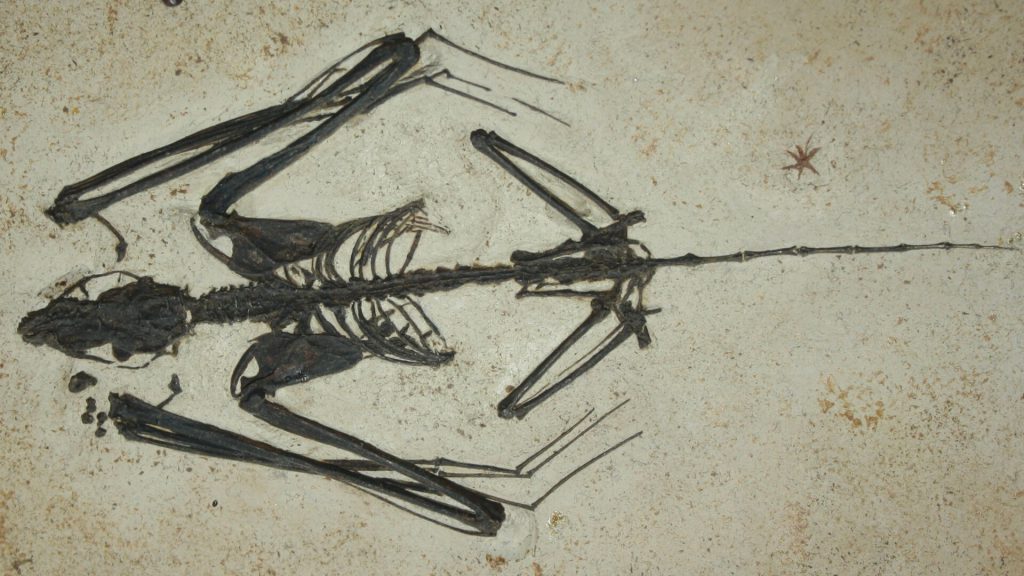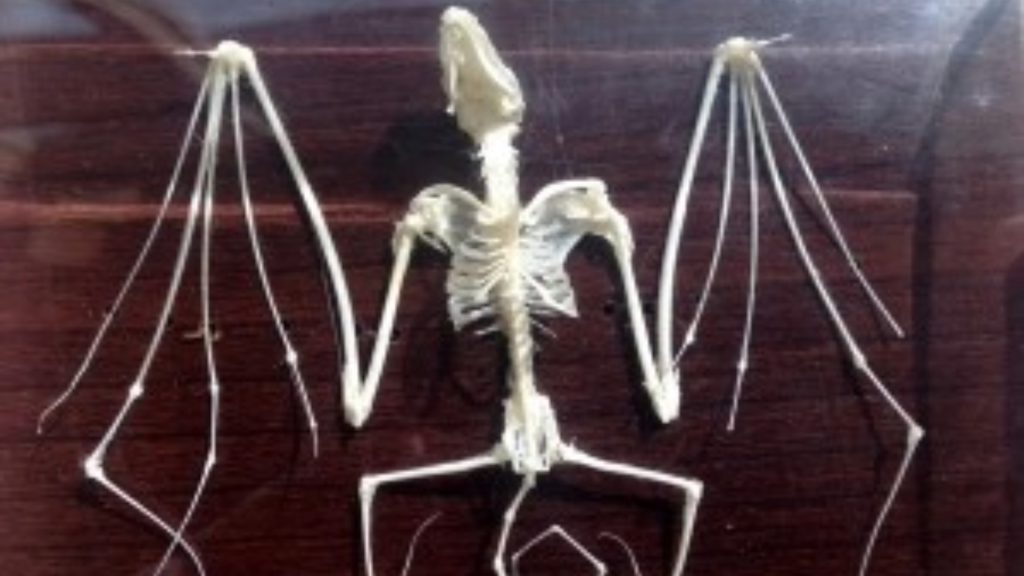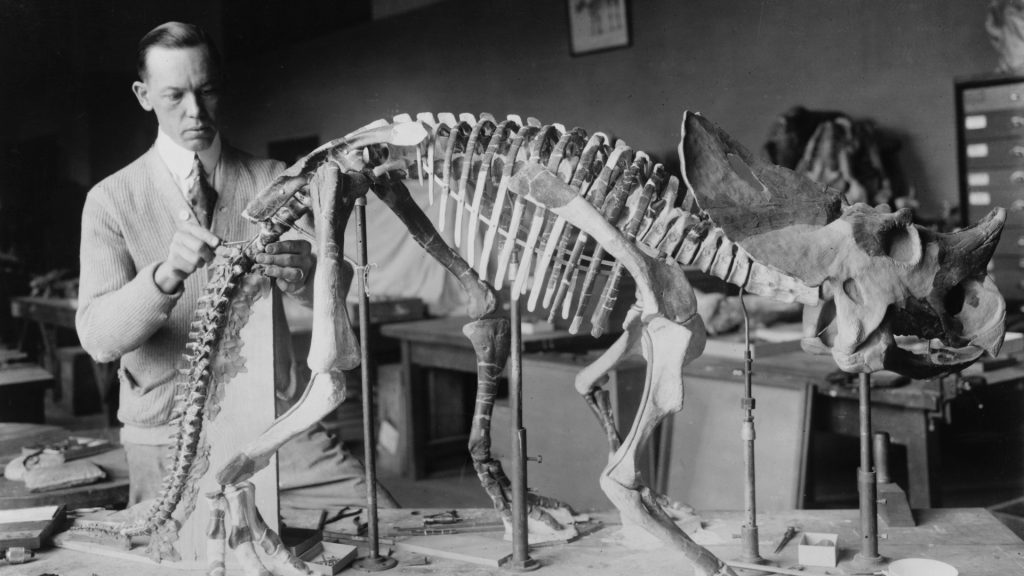Roughly twenty percent of the world’s bat population lives in Africa. This continent is home to more than 200 different bat species, an incredible diversity. There are, in fact, 72 species of bats native to South Africa alone.
With so many bats flying around Africa today, why is it that bat fossils are disproportionately sparse? One reason, as we will see, could be the climate in Africa. The other reason, however, could be that bats have an unsavory reputation.
Where Are All the Bat Fossils?
That was the question asked by Dr. Mariette Pretorius, a research zoologist specializing in bats. Given Africa’s diverse bat population, it would seem reasonable to expect to find an abundance of fossilized bat bones in the storerooms of natural history museums, universities, and research labs.

She was baffled to learn that these facilities had very few bat fossils in their collections. The ones that were available were from the Pleistocene epoch. Other parts of the world – in Europe and North America, for example – there are plenty of bat fossils. Where did all the bat fossils of Africa go?
The Quest to Find the Answer
Dr. Pretorius set out to answer the question of Africa’s missing bat fossil record. She published her findings in an article titled “The Elusive Echo: The Mystery of Africa’s Sparse Bat Fossil Record,” which appeared in a recent issue of the South African Journal of Science.

In her article, Dr. Pretorius delves into the issue and presents her best educated guesses to explain the lack of bat fossils. In addition, she explains why it is important and why we should care about ancient bat fossils in the first place.
Africa’s Inhospitable Climate
Bats naturally make their homes in caves and forests. The caves on the African continent are, in many places, dank and moist. Bats that died in these caves were consumed by bacteria before they could become fossilized.

The remains of dead bats simply didn’t last long enough in these conditions to become fossils. The geological process of transforming bone into fossil simply takes too much time.
Bat Bones Are Delicate
Bats are one of the few mammals that have evolved the ability to fly. In order to accomplish this, bats have fine, hollow bones. Their dainty and fragile frames more easily succumb to the ravages of time than more substantial mammals.

The wings of bats are thin membranes of skin. These, too, are so delicate that it is rare for them to be preserved in the fossil record.
Bats Weren’t a Popular Research Topic
Another possible explanation for the lack of ancient bat fossils in Africa could be related to the unpopularity of bats. These animals have long been associated with superstitions, fears, and evil, though much of it is based on misunderstandings and misinformation.

Bats’ behavior and habitat have contributed to this. Bats only come out at night and roost in attics, caves, and abandoned buildings. Plus, they are rather frightening in appearance. Superstitions about bats continue to persist, even though most of them are unfounded.
Bats and the Supernatural
In cultures and beliefs around the world, bats have been viewed as supernatural creatures. Bats are considered harbingers of doom, disaster, and death. Bad luck followed when humans encountered bats.

According to the vampire legends of Europe, bats can shapeshift into vicious, bloodthirsty vampires. In Native American folklore, bats guide the dead to the underworld. They are traditionally the companions of witches.
Early Fossil Hunters Focused on Other Mammals
Dr. Pretorius speculates that early fossil hunters who eagerly descended on Africa a century or two ago came across fossilized bat bones, but that they ignored or destroyed them. The larger mammals of Africa were more exciting and interesting.

Bats, as commonly maligned creatures, were cast aside by European fossil hunters in favor of animals that were not native to Europe. It is possible that there were a fair amount of prehistoric bat fossils that were found centuries ago, however they were not preserved in collections like the fossil remains of other animals.
Ancient Bat Fossils Have Yielded Some Breakthrough Finds
Some of the few prehistoric bat fossils, dating back more than 35 million years, have yielded some amazing finds. A team of researchers spent more than 25 years studying 33 fossilized specimens of prehistoric bats that were discovered in Egypt.

These researchers announced in 2008 that they had identified six new species of bats among these 33 fossils. One of them – the rhinopomatidae bat – represents the earliest known ancestor for three of Africa’s bat families. Another bat fossil was from one of the largest known ancient bats.
Ancient Fossils Offer Clues to the Origin of Bats in Africa
From studying these 35-million-year-old bat fossils, scientists have gathered clues to suggest that many of Africa’s bats arrived on the continent from the north.

In fact, bats appeared to have spread to Africa between 66 million to 34 million years ago. This coincided with the arrival of the earliest primates to the African continent. From this, scientists gained a new understanding of animal migration, as well as evolution.
Bats as Carriers of Disease
Another reason why bat fossils may have been disregarded in the past is that bats have a negative reputation as carriers of diseases. Bites and scratches from infected bats could transmit deadly rabies to humans. Even people of the past knew this and avoided bats.

The recent Covid-19 global pandemic is yet another example of how bats are indelibly linked to contagious diseases.
Why Worry About the Missing Bat Fossils?
As Dr. Pretorius noted, it would be easy for people to shrug their shoulders when they read that there is a gap in the bat fossil record in Africa. Why should they worry about missing bat fossils? It is, in reality, more important than simply solving a paleontology mystery.

Several of Africa’s bats are experiencing declines in their population numbers. Habitat loss – the result of expanding agriculture, the rapid growth of urban centers, and deforestation – is the biggest threat. If researchers had an abundance of ancient bat fossils to study, they could discover how these mammals adapted to changes in the past.
Discovering How Bats Acquired Their Amazing Abilities
At some point in their history, bats acquired two amazing abilities – flight and echolocation. While some other mammals can glide through the air, bats are the only ones that are truly capable of flying. How and when did they develop this ability?

Bats rely on echolocation – a type of sonar – to navigate in the dark and to find their prey. If scientists had ancient bat fossils to study, they could possibly discover how bats acquired flight and echolocation.
Bat Conservation Efforts
The more researchers can learn about the evolutionary past of bats in Africa, the more information they will have to help protect these important members of the food chain.

By studying the fossil record, scientists could have learned how bats have been impacted by climate changes in the past. This could have helped them develop more effective bat conservation strategies.






